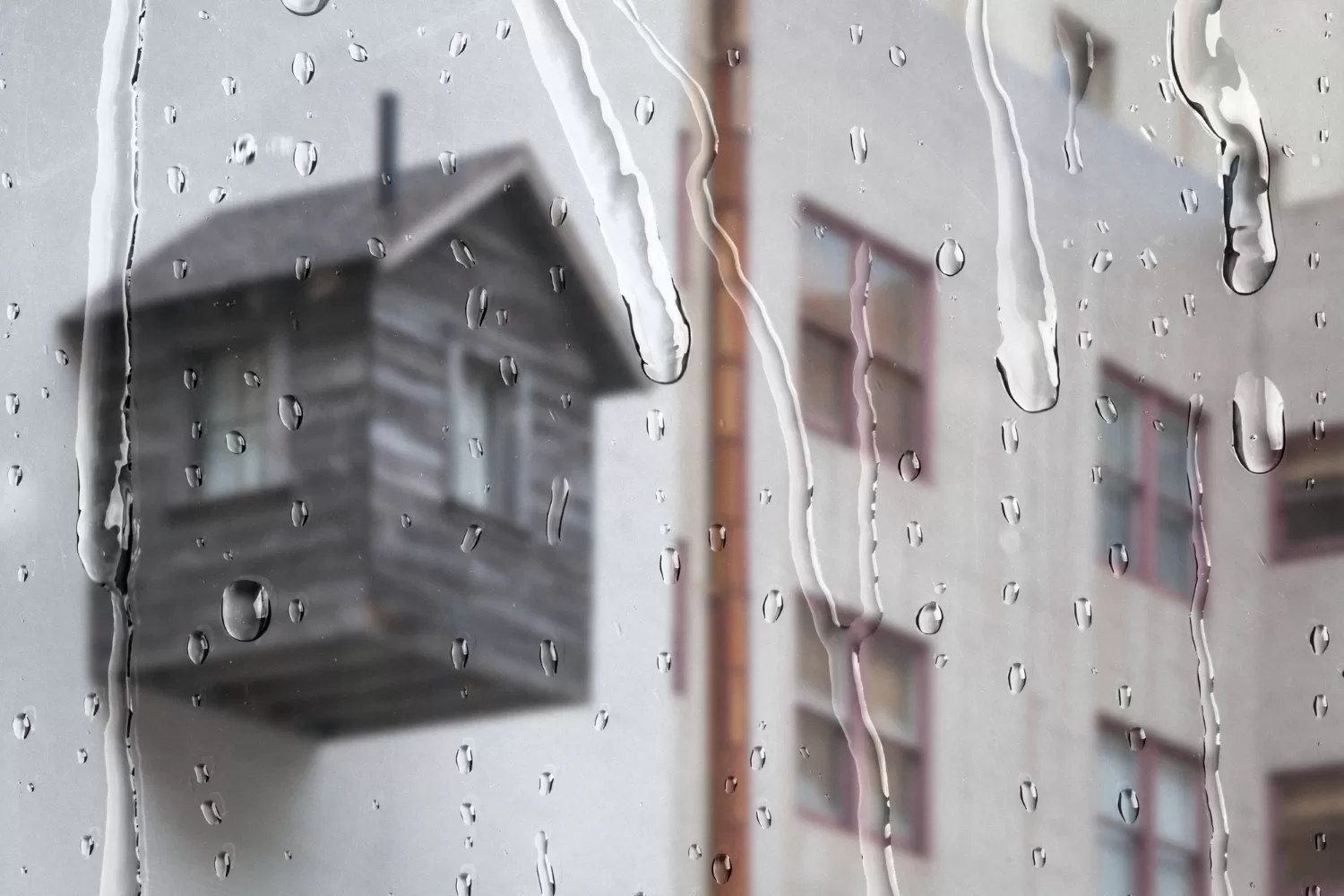Winter is here, and with it comes cold, damp weather and a noticeable increase in condensation around your home. While it may seem like a minor issue, left unchecked, moisture can lead to problems such as mould growth and damage to your home’s structure. Understanding its causes and how to treat it is key to maintaining a healthy and dry living environment.
Why is Condensation a Problem?
Excess moisture in the air leads to damp patches on windows, walls, and ceilings. This creates the perfect environment for mould, bacteria, and even respiratory infections to flourish. Over time, it can damage plaster, cause wallpaper to peel, and even rot wooden surfaces. Even uPVC window frames aren’t safe; persistent condensation can cause window seals to crack and deteriorate, compromising insulation and structural integrity.
If you’ve been wondering how to stop condensation on windows or how to manage general household damp, read on; we have all the answers you need!
What causes condensation?
Condensation forms when moist air meets a cold surface and turns into water droplets. Everyday household activities, such as cooking, boiling kettles, showering, and drying clothes, all release moisture into the air.
If you have a dehumidifier, you’ll have already seen how much water builds up inside your home in just 24 hours. In fact, a typical household of two people can produce over 20 pints of water vapour every day, simply by breathing, washing, and going about their daily lives.
In short, condensation is caused by things that can’t be avoided, so there’s no escaping it. But it is possible to learn how to control it if you understand it correctly.
Why is Condensation Worse in Winter?
In colder months, walls, windows, and doors become colder than the indoor air. When warm, moisture-laden air comes into contact with these cold surfaces, water droplets form.
Condensation becomes particularly problematic in winter due to a combination of factors.
Temperature Difference: During winter, we often turn the heating up to the highest setting to stay warm. But surfaces like walls, windows, and doors remain colder due to the outside temperature. When the warm, moisture-laden air inside the home comes into contact with these cold surfaces, it cools quickly and condenses into water droplets.
Less Ventilation: We also tend to keep windows and doors tightly shut during the colder months. This limits airflow and traps moisture inside, making it harder for damp air to escape. As a result, humidity builds up indoors, increasing the chances of condensation forming.
How to Get Rid of Condensation?
Given that you need to eat, wash, and breathe all year round, and nobody wants to freeze in winter, treating condensation can feel like a major challenge. But do not fret, fortunately, there are some simple steps you can try at home to keep condensation at bay.
- Wipe surfaces regularly – Focus on areas where moisture tends to collect, such as window sills, panes, and bathroom tiles. Keeping these dry helps prevent condensation build-up.
- Start baths with cold water – When running a bath, begin with cold water before adding hot water. This reduces steam and lowers humidity.
- Avoid drying clothes on radiators – Radiators release extra moisture when used for drying. Instead, use a clothes horse in a well-ventilated, cooler room.
- Use a dehumidifier – A dehumidifier is excellent for removing excess moisture, particularly useful when drying clothes indoors.
- Always run extractor fans – In kitchens and bathrooms, use the extractor fan and keep doors and windows closed while it’s running. This ensures damp air is removed rather than spread around.
- Apply anti-condensation paint – This can help insulate walls and reduce moisture build-up. Ensure the surface is clean and dry for optimal results.
How to Stop Condensation on Windows and Beyond
The steps above provide quick and simple ways to manage condensation on a day-to-day basis. For a more permanent solution, consider the following long-term measures to proactively prevent condensation and maintain balanced moisture levels.
Ventilation
Always keep your house ventilated, even in winter. This allows moisture to escape and stops condensation from forming. We understand that no one wants to have their windows wide open for cool air to rush in during winter, but anything you can do to maximise air circulation is a plus.
- Open windows (even slightly) for short periods, especially after cooking or showering.
- If your windows have trickle vents, make sure they’re open.
- Consider installing vents in windows, doors, or walls if you lack sufficient ventilation.
- Don’t forget to check that the outside vents aren’t blocked by leaves or debris.
Furniture Placement
Knowing how to treat condensation on walls often involves making simple adjustments to your furniture placement. Moving furniture away from walls, particularly outside walls, is a great help. This leaves a gap for air to circulate more freely, preventing moisture from becoming trapped and accumulating.
This applies to internal walls too. Although internal walls are warmer than external ones, clutter in front of them still encourages condensation.
Consistent Temperature
If you’re wondering how to prevent condensation from forming, simply adjust the thermostat to maintain a moderate temperature throughout the day, avoiding extremes of too hot or too cold. You don’t need a constant high temperature for hours to be warm.
Tumble Dryer
Using a tumble dryer may seem more convenient than a clothes horse, but dryers are major contributors to indoor condensation due to the amount of warm, moist air they release. With vented models, make sure the ventilation pipe directs the air outside. Condenser tumble dryers, on the other hand, don’t vent externally — they release warm air into the surrounding space, which can leave the room feeling damp and stuffy. To prevent moisture build-up, always ensure the room is well-ventilated when using a condenser tumble dryer.
Expert Help for Stubborn Condensation Issues
If you’ve tried these methods and are still struggling with persistent damp, it might be time to call in the professionals. Companies like CS Damp Proofing, with over 30 years of experience in condensation, rising damp, and penetrating damp, can offer specialist solutions. Don’t wait for small problems to snowball; get in touch today by calling 01765 452510.
For further advice, check out our other articles on condensation:

